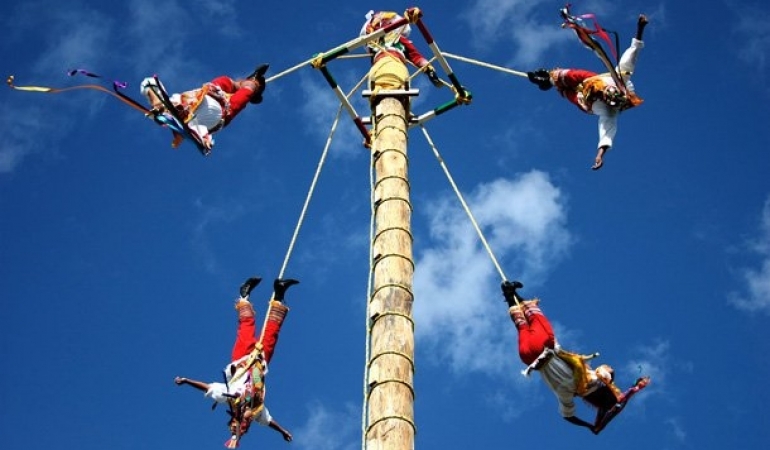

The Flyers of Papantla are indigenous artists demonstrating an ancient cultural tradition that is closely related to the Totonac Papantla area, located north of Veracruz. They protray the bird men who during a long ceremonious moment achieve one of the most desirable dreams of man: "to fly".
It is said that the ritual was a performance done before the gods to end a severe drought and today it is practiced throughout Mexico. Fortunately for residents and tourists in Vallarta • Nayarit, there are Papantla Flyers on the Malecon.
The origin of the ritual of Papantla Flyers lies mainly in thanking Chichini (the sun god), Xipe Totec (god of spring and fertility) and Tlaloc (god of rain). Therefore, this dance serves as ritual and prayer for love of the land, its bounty and the natural forces that govern it.
Typically, the ceremony involves five men dressed in white shirts, red pants, belt and hat. The costumes are richly decorated with colorful ribbons and embroidery, and are made by the flyers themselves. Men climb a 30 meter pole up to a platform of four corners. The foreman (musician) stands in the center and plays the drum and flute until after the flight ends.
Before beginning, after performing some ritual dances, the four dancers begin to tie their feet and fall backwards in solemn procession, upside down, and take flight in the air as the four corners spin and the rope loosens lowering them down to the ground in a spin.
During the flight, they become birds to honor Chichini and Tlaloc, descending to the earth to making of thirteen spins each (fifty-two in total), representing the total weeks in a year and the total years that make a prehispanic century, after which the cycle of life begins again.
At the Malecon in Vallarta, this ceremony is totally free, but donations are asked from spectators in support of this exhibition. During your stay, miss an opportunity to come with your family to take photos and live the exciting ritual of the Flyers of Papantla.
Learn more about Vallarta • Nayarit.